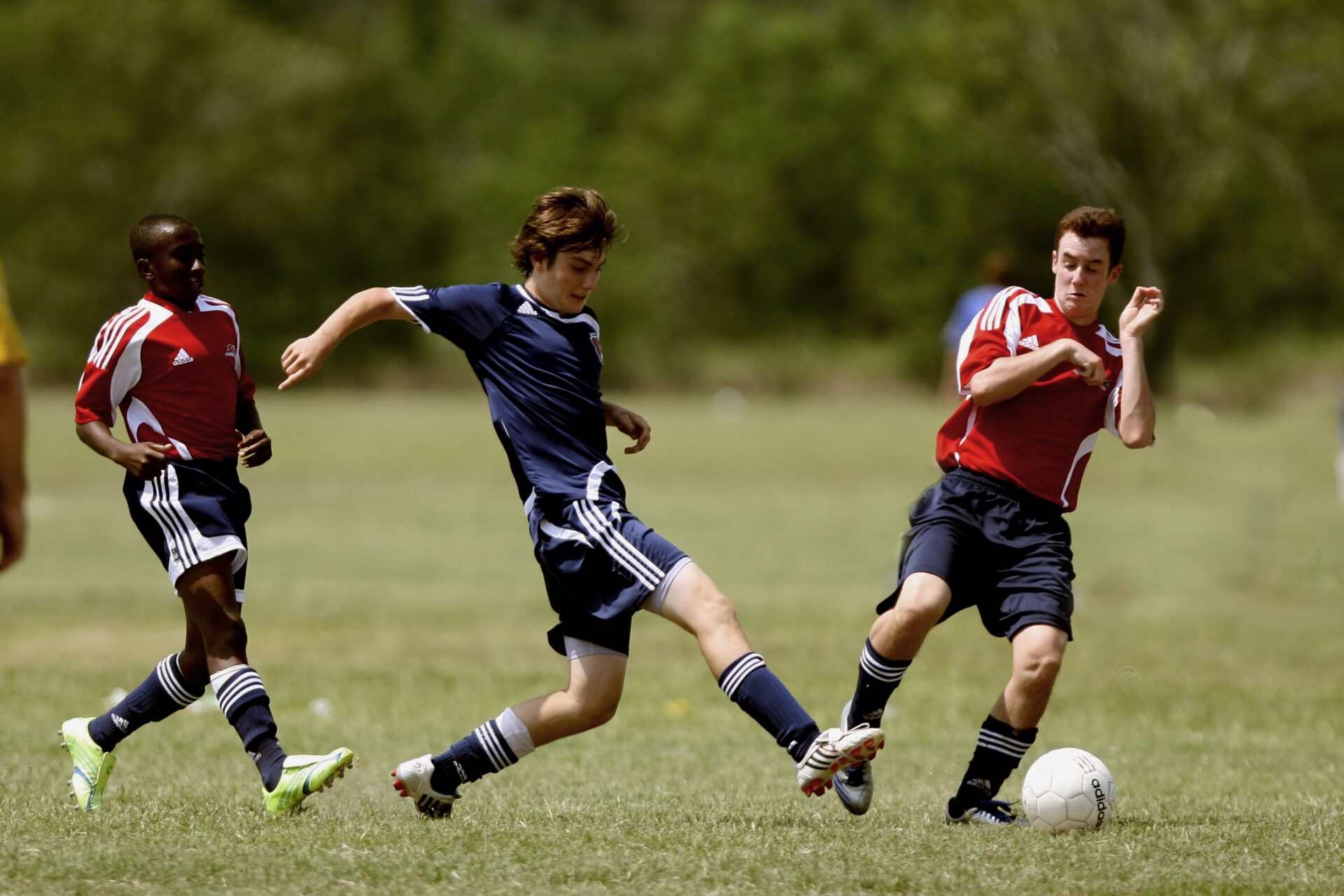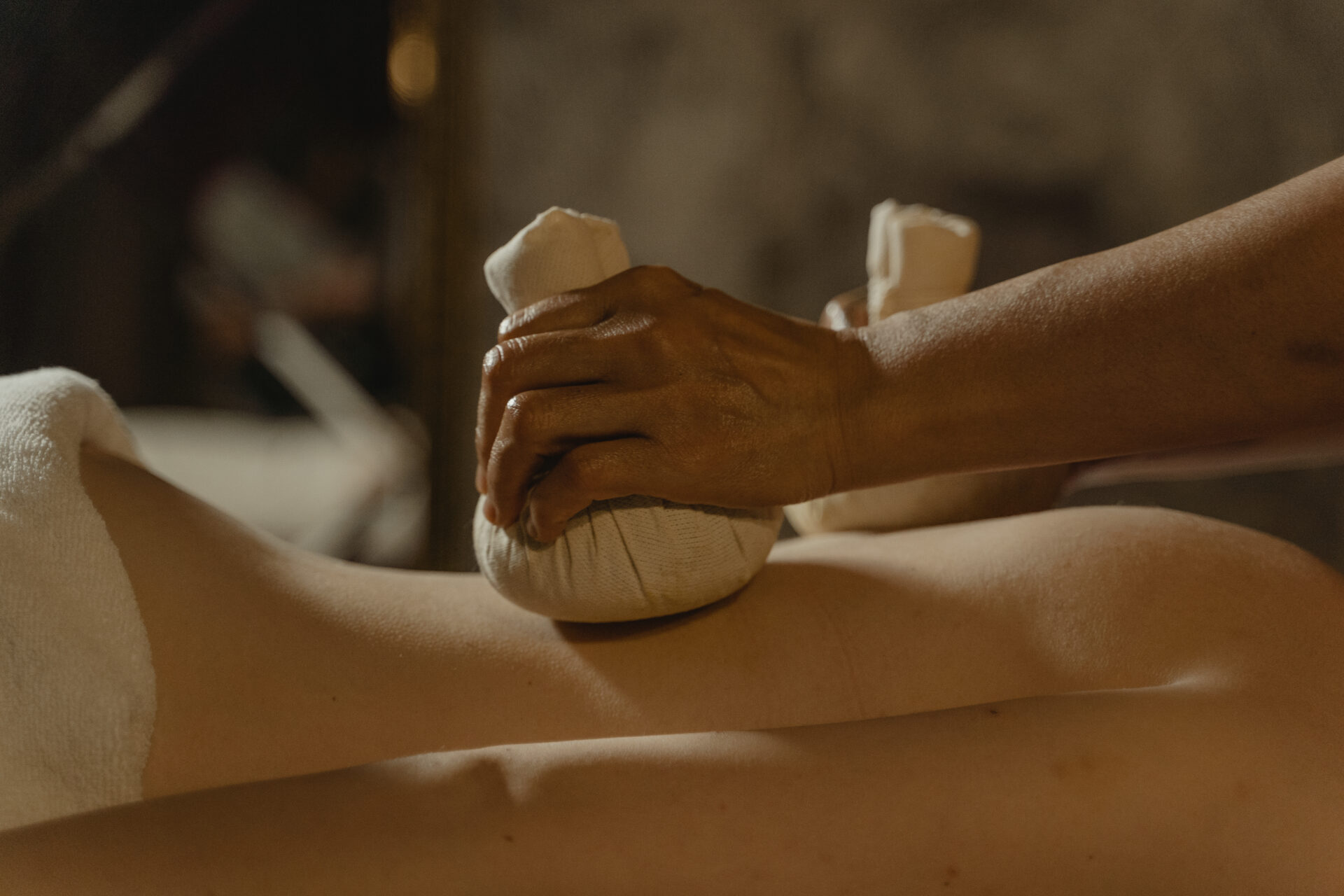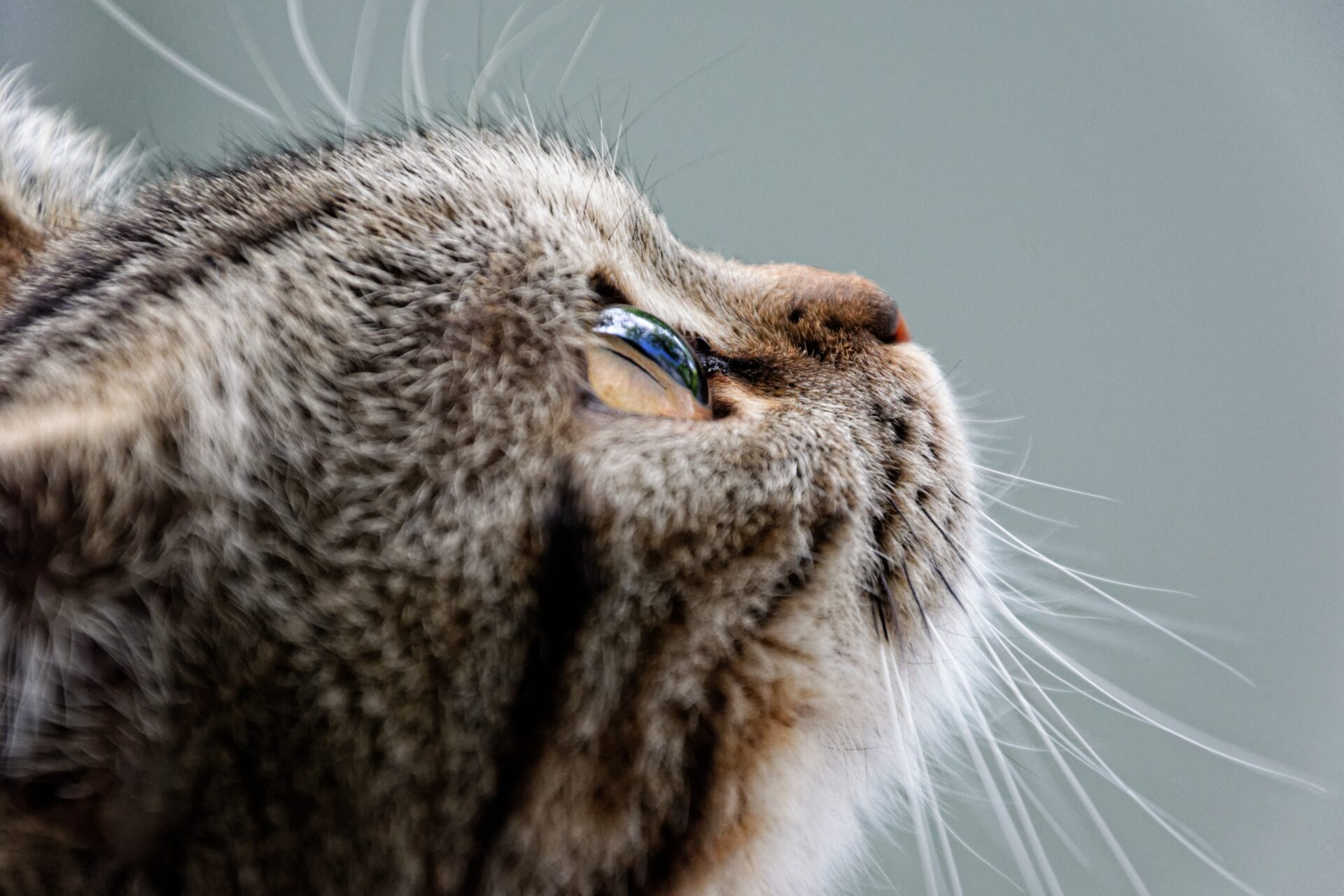Kicking a soccer ball far can be an extremely useful skill to have, both on and off the field. When done correctly, a powerful kick can help you gain an advantage over your opponents by quickly moving the ball upfield or out of danger. In this guide, we’ll explore some of the key techniques you need to know in order to kick a soccer ball with maximum distance and power. From choosing the right type of boot to optimizing your stance and technique, we’ll cover everything you need to know about how to kick a soccer ball far.To kick a soccer ball far, start by positioning your dominant foot about a shoulder-width apart from the ball. Bend your knees slightly and tilt your hips back. Lock your ankle and keep your toes pointing downward. Swing your kicking leg back and up, transferring your weight to the opposite side of your body. As you swing forward, make contact with the middle of the ball and follow through to generate power while keeping your leg straight. Finish with a pointed toe for accuracy and power, and aim for the top half of the ball if you want it to fly farther.
Techniques to Increase Kicking Distance
Kicking a soccer ball with accuracy and power is essential for any player, whether they’re an amateur or a professional. To increase kicking distance, there are several techniques that can be used. The most important technique is to practice regularly. With regular practice, the strength of the kick will increase and so will the distance. Practicing with an experienced coach is recommended as they can help identify any issues in technique and correct them.
Besides regular practice, another effective way to increase kicking distance is by improving flexibility. Before kicking a ball, it is important to do some warm-up exercises that focus on stretching the leg muscles and increasing flexibility. Stretching helps reduce injury risk while also improving power when kicking a ball.
In addition to regular practice and flexibility, bodyweight exercises can also help improve kicking distance. Exercises such as squats and lunges help build leg strength which will improve the power of the kick. It is important to start off slowly with these exercises at first and then gradually increase intensity over time as strength improves.
Finally, having the correct footwork when taking a kick is essential for increasing distance. If footwork is incorrect then it can lead to loss of power in the kick which will reduce the overall distance of the ball. It is important to make sure that there is balance between both feet when taking a kick and that all parts of each foot are used for maximum power transfer into the ball.
Muscles Used During a Soccer Kick
A soccer kick requires the coordination of multiple muscle groups, from the head and neck down to the feet. The main muscles used in a soccer kick include the quadriceps, hamstrings, gluteus maximus, tibialis anterior, gastrocnemius and soleus.
The quadriceps are located on the front of the thigh and are responsible for extending the knee joint. The hamstrings, located on the back of the thigh, are responsible for flexing the knee joint. When kicking a soccer ball, both of these muscle groups work together to generate power and accuracy.
The gluteus maximus is an important muscle group located at the base of your spine that helps to stabilize your body during a kick. The tibialis anterior runs along the outside of your shin and helps to dorsiflex your ankle joint during a kick. This allows your foot to stay flat on impact with the ball in order to help generate power and accuracy from your shot.
The gastrocnemius and soleus muscles are located in your calf. They both help to plantarflex your ankle joint when kicking a soccer ball which increases power in our shots as well as providing stability during our kick.
Overall, all of these muscle groups must work together in order for you to have an effective soccer kick with power, accuracy, and stability.
Practicing Kicks to Increase Distance
Kicking is a key component of sports like soccer, football, and rugby. To improve your kicking ability, you need to practice regularly. Practicing kicks can help you increase your kicking distance and accuracy.
The first step to improving your kicking is to practice good form. Make sure that you are using the correct technique for each kick, as this will help maximize the power and accuracy of your kicks. You should also focus on planting your foot firmly while you kick, as this will reduce the chances of injury and help with accuracy.
Once you have the form down, it’s time to start practicing more advanced techniques. Working on drills that involve multiple kicks in a row can help you develop muscle memory so that each kick becomes second nature. You’ll also want to practice with different surfaces so that you can become comfortable with any surface conditions that you may encounter during a game or match.
Finally, don’t forget to do some strength and conditioning exercises as well. Increasing your core strength and flexibility can help improve your overall kicking ability by giving you more power and stability when kicking the ball. Plyometric exercises such as jumps and hops can also be beneficial for generating more power behind your kicks.
By following these steps, you can be sure that you are practicing effectively to improve your kicking distance and accuracy. With regular practice and dedication to perfecting your technique, you’ll be able to reach new heights in no time!
Kicking a Soccer Ball
Kicking a soccer ball is an essential skill for any soccer player. It’s the most basic way of moving the ball up and down the field and scoring goals. Learning how to kick a soccer ball correctly will help you become more confident and successful on the field. Here are some basics of kicking a soccer ball.
The first thing to learn is how to stand when you’re about to kick the ball. You want your body weight to be evenly distributed so that you can achieve the maximum power behind your kick. Your feet should be shoulder-width apart, with your toes pointing slightly outward, and your knees slightly bent. This stance will give you better balance and stability when you kick the ball.
The next step is to practice your technique. As you’re kicking, make sure that you stay balanced and maintain good posture. Your non-kicking foot should be slightly off-center from where you’re kicking, as this will help give your kick more power. You should also keep your eyes focused on where you want the ball to go, not just at the point of contact between foot and ball.
Finally, make sure that when you strike the ball, it’s with the laces of your shoe – not with the toe or instep – as this will give it better accuracy and power than other parts of your foot. When done correctly, this technique can produce powerful shots that could easily find their way into the back of net!
Kicking a soccer ball correctly takes practice and dedication in order to perfect it. However, once mastered, it can be one of the most important skills in any player’s arsenal. With consistent practice over time, any player can become an expert kicker who can make accurate passes and score goals with ease!
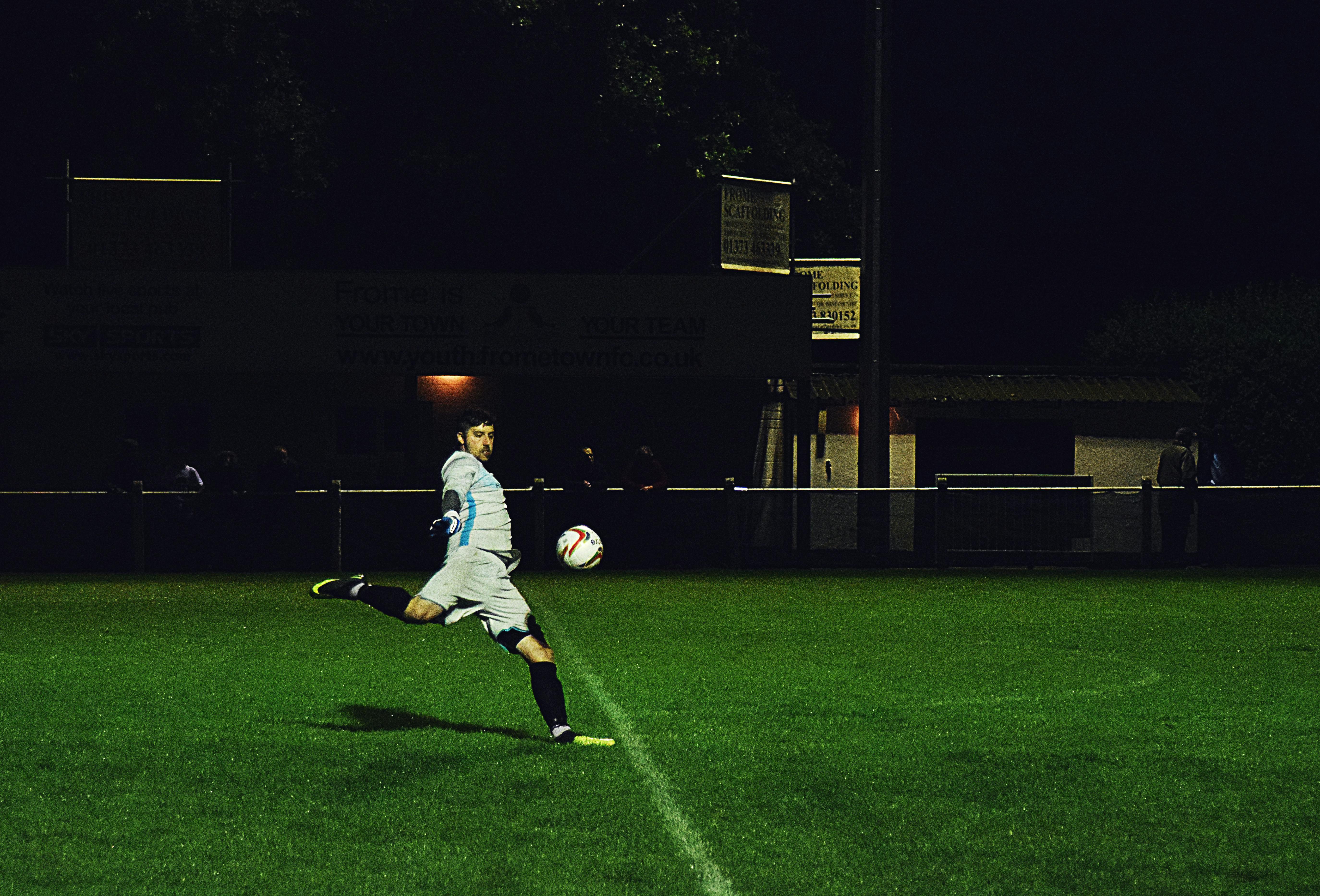
Choosing the Right Footwear for Kicking Distance
When it comes to kicking long distances, the right kind of footwear is essential in order to maximize the power and accuracy of your kick. With the right pair of shoes, you can improve your kicking technique and increase your distance. Here are some tips on how to choose the best footwear for kicking distance.
First and foremost, you need to consider the type of surface you will be kicking on. Different surfaces require different types of footwear. For example, if you are playing on a turf field, then shoes with longer cleats will help you gain more traction. On the other hand, if you are playing on a hard surface such as concrete or asphalt, then shorter cleats may provide better grip and stability.
It is also important to consider the materials that make up your shoes. Generally speaking, shoes made from synthetic materials such as nylon or polyester will provide more support and cushioning than those made from leather or canvas. This is especially important if you plan on kicking long distances as it can help reduce fatigue and soreness in your feet and legs.
Finally, it is important to consider the shape of your feet when selecting footwear for kicking distance. If you have wide feet, then look for shoes that offer extra room in the toe box area so that your toes do not feel cramped during a long practice session or game. On the other hand, if you have narrow feet then look for shoes with a snug fit so that they do not slip off during a kick or cause discomfort when running or sprinting downfield.
By following these tips, you can ensure that you choose the best footwear for kicking distance and improve your overall performance on the field. With proper footwear selection, you can be sure that every kick will be powerful and accurate no matter what surface you are playing on!
Benefits of Doing Warmup and Stretching Before Kicking a Soccer Ball
Warming up and stretching before kicking a soccer ball is essential for getting the most out of your performance. Warming up increases blood flow to the muscles, which helps them move more freely and reduces the risk of injury. A warmup also helps athletes focus on their game by increasing alertness and improving coordination. Stretching is important because it helps to improve range of motion, flexibility, and balance while reducing muscle tightness. It can also help reduce stress levels and increase relaxation. By doing a warm up and stretching before kicking a soccer ball, athletes can ensure that they are prepared for an optimal performance.
In addition to physical benefits, warming up and stretching before kicking a soccer ball can also provide mental benefits. Warming up helps athletes focus on what they need to do during the game by helping them mentally prepare for the task at hand. Stretching helps to relax both body and mind, which can help athletes stay calm under pressure. By taking the time to warm up and stretch before playing soccer, athletes can ensure that they are physically as well as mentally ready for competition.
Overall, warming up and stretching before kicking a soccer ball is essential for optimal performance on the field. Warming up increases blood flow to the muscles, helping them move more freely while reducing the risk of injury. Additionally, stretching helps improve range of motion, flexibility, balance, and relaxation while reducing muscle tightness. Finally, warming up and stretching can provide mental benefits such as improved focus and relaxation under pressure. By taking the time to warm up and stretch before playing soccer, athletes can ensure that they are prepared for an optimal performance every time they take to the field!
The Physics Behind Kicking a Soccer Ball Far
Kicking a soccer ball far is an art. It requires strength, agility, and technique for the ball to travel long distances. But the physics behind this feat are often overlooked. In order to understand how a soccer ball travels so far with one kick, it is important to understand the basic principles of physics that are at play.
The first principle of physics that comes into play when kicking a soccer ball is force. Force is the amount of energy applied to an object in order to move it. When kicking a soccer ball, the force applied is created by the muscles in your legs and feet as you kick the ball. The more force applied, the farther the ball will travel.
The second principle of physics that comes into play when kicking a soccer ball is trajectory. Trajectory is the path an object follows through space as it moves from one position to another. When kicking a soccer ball, your foot creates a curved path for the ball to follow as it travels through space. This curved path helps ensure that the ball travels farther than if it were traveling in a straight line.
The third principle of physics that comes into play when kicking a soccer ball is air resistance. Air resistance is what causes a soccer ball to slow down as it travels through space due to friction with molecules in the air around it. In order for a soccer ball to travel far distances, air resistance must be minimized by creating less friction with molecules in the air around it while still getting enough lift from them for maximum distance.
These are just some of the basic principles of physics at work when kicking a soccer ball far distances. With practice, and by understanding these principles, anyone can learn how to kick like professional players and get their kicks traveling long distances across any field!
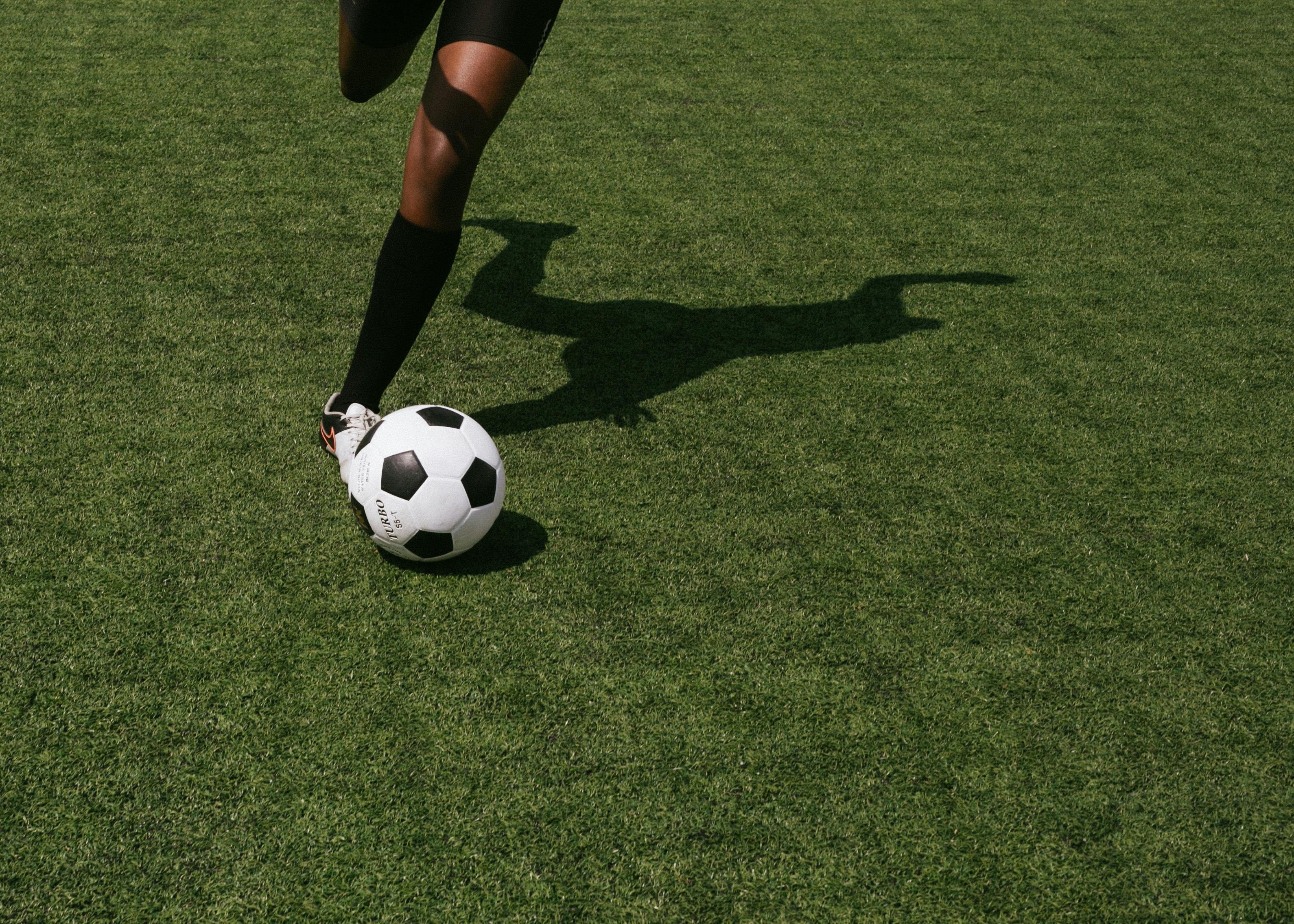
Conclusion
Kicking a soccer ball far requires a combination of technique and practice. To kick the soccer ball far, you need to find your balance, use the right part of your foot, and follow through with your kick. You should also practice your kicking technique and focus on powerful leg muscles to help increase the distance of your kicks. When it comes to kicking a soccer ball far, the most important thing is to have patience and keep practicing. With enough practice you can become an expert at kicking a soccer ball far.
Remember that with any sport, technique is essential for achieving success. To kick a soccer ball far you need the right technique and practice. Once you have mastered this technique, you’ll be able to kick a soccer ball farther than ever before!

